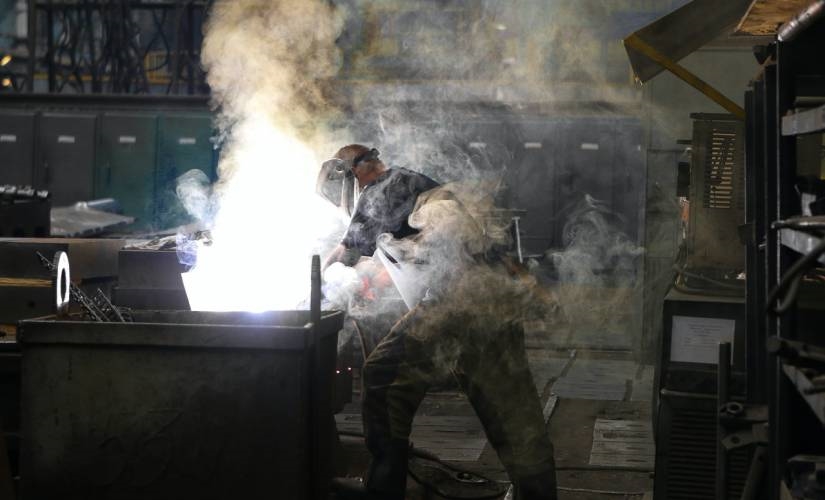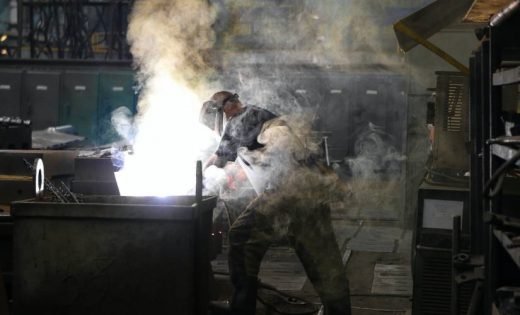How Does the IoT Reduce Manufacturing Downtime?
How Does the IoT Reduce Manufacturing Downtime?

Unplanned manufacturing outages can be significantly costly and cause massive workflow disruptions. However, the Internet of Things (IoT) can help companies reduce manufacturing downtime in numerous ways. Although using the technology requires financial and time-related investments, the associated positive outcomes are often worthwhile.
Downtime Could Have Many Ramifications
Something that often gets overlooked is that the effects of downtime span further than the single machine experiencing the problem. The most obvious initial problem may be that the company cannot use a certain piece of equipment.
However, the overall outage time may increase if a company has to have a part special-ordered or wait longer than expected for a maintenance technician to confirm the problem and propose a solution. Then, depending on the machine’s purpose, a company may need to completely reroute its production or temporarily shut down a part of the factory due to the outage.
In other cases, an outage could restrict the company’s productivity and mean that not as many people can work on a shift at a particular time. If a company is dealing with a tight deadline that the machine failure impacts, it risks disappointing customers or possibly failing to fulfill an associated contract.
Manufacturers have various options for using the IoT to minimize downtime. However, one popular solution is to apply the technology for predictive maintenance. Research indicates that the approach could cause a 70-75% reduction in breakdowns, along with a 35-45% decrease in downtime.
So, for a start, the IoT could make machine failures occur less often. Then, when they do happen, the timeframe when the equipment cannot operate should be shorter. Those effects should mean that issues are less disruptive overall and give companies more flexibility when representatives choose how to deal with them.
The IoT Can Keep People Safer and Healthier
Broken machines are not the sole reason for downtime in manufacturing. A survey of Asia-based manufacturers during the COVID-19 pandemic showed that they faced multiple challenges. The most relevant issue for this topic is that 30% had difficulties with team member availability.
COVID-19 is highly contagious, and the conditions in many factories facilitate its spread. If all or most people on a given shift contract it, that situation could cause manufacturing downtime. That’s especially likely if the affected company already struggles with staff shortages.
In Singapore, Shell used IoT devices to speed up the contact tracing process for manufacturing workers at an oil and gas plant. Before the technology deployment occurred, it reportedly took hours to conduct contact tracing on all the parties in an affected area. Now, people use wearable devices with built-in connectivity that can store and share the necessary contact tracing information with the correct parties, streamlining the overall approach.
The IoT can also reduce manufacturing downtime caused by injuries. Many jobs in this sector require repetitive movements. If workers do not know the appropriate ways to lift, bend, and reach, they could be at an increased risk of injuries that require taking days off work and contribute to a factory’s downtime.
Connected wearables could reduce fatigue, too. Statistics show that companies with 1,000 team members could lose up to $ 1 million annually due to tiredness.
Workplace wearables can make people more aware of when they need to adjust their movements or posture. Vigilant Technologies makes the Arc wearable. It’s a clip-on product that detects risky movements then vibrates to help people make corrections. A company representative says companies have achieved a reduction of more than 33% for unsafe behaviors and injuries that required taking time off work.
Avoiding Time-Consuming Situations With the IoT
Leaders are also eager to reduce manufacturing downtime because there are often aspects that make certain parts replacements take a long time. For example, some pieces of industrial machinery used in manufacturing reach extremely high temperatures. In such cases, it’s usually necessary to cool them down first before replacing a part. However, that step could take hours.
The better approach is to switch out a component during a time that will cause the least disruption. A plant might do it over a weekend if the facility only operates during the week. The IoT provides data that allows decision-makers to have more control over when maintenance or parts replacements occur. If a machine breaks down suddenly, it’s not possible to have that flexibility.
One global automotive component manufacturer wanted to reduce instances of fan failures inside brazing ovens. When the fans broke, factory representatives needed 36 hours to resolve the problem. However, sensor data allowed them to intervene before the fans stopped working. More specifically, the company’s data scientists warned the fans would break down in 58 hours.
Maintenance team members doubted the information. However, their superiors insisted they change the components based on what the data said. The maintenance crew was surprised that half of the fan blades had disintegrated, proving that the sensor data was right.
As this example shows, going by the recommended or expected maintenance schedule with critical machinery does not always help manufacturers steer clear of problems. One of the primary advantages of the IoT is that it can detect things that humans may miss. When the technology picks up on those abnormalities, manufacturing leaders can save time and devote resources to keeping the equipment functional or reducing manufacturing downtime.
The IoT Accelerates Response Times
When someone initially notices a problem with a piece of machinery, it can take a while to get to the root of the issue. When someone examines the equipment, they might ask questions to find out when the abnormal behavior began, which symptoms became apparent first, and whether certain factors make the machine more likely to show those unusual signs. Perhaps they only appear after first starting the machine or after at least four hours.
However, some IoT platforms send real-time data to people within and outside of a company. For example, the information might go to the on-site maintenance team, as well as service workers associated with the company that makes the equipment.
One company specializing in heating, ventilation, and air conditioning (HVAC) equipment developed its Virtual Technician app. When technicians need help in the field, they launch it with the press of a button. Doing that contacts all of the company’s internal engineers. It takes less than 10 seconds to connect an available engineer to the field technician requiring assistance.
In other cases, the IoT allows outside technicians to access information about a client’s system before arriving on-site to take a close look at the issue. Then, it takes significantly less time to diagnose the problem after getting there. A machine specialist may even be able to troubleshoot certain things while off-site, making it easier to narrow down what’s causing the abnormality and how to fix it.
Providing Evidence for Machine Replacements or User Training
Most IoT products also allow users to track trends. That capability allows a company’s decision-makers to see when it may make more sense to replace equipment rather than keep repairing it when problems arise. The sensor data may reveal that a particular machine broke down or received urgent servicing six times over the last year. Perhaps all the similar equipment only needed attention twice. Having that information makes it easier to justify replacing a machine.
Without the data provided by the IoT, a company decision-maker may be less likely to trust a service technician’s recommendation to proceed with a replacement. However, having the data allows building context around it. After seeing that a machine required servicing six times in the last year, a person could then look at supporting data to see how much money the business lost because of the outage or the number of hours it took to remedy the problem.
Similarly, IoT data could show that manufacturing downtime may happen because users fail to follow the proper steps when using a machine. Some industrial machines require a certain period to warm up before someone uses the equipment for tasks. However, sensors could reveal that specific people don’t complete that warm-up period.
Alternatively, many manufacturers use equipment such as forklifts. Operators could engage in behaviors such as going around turns too quickly or braking too hard. Many IoT sensors function as asset trackers, so those products could capture data about people using equipment inappropriately and potentially contribute to preventable downtime.
Leaders could then rely on the data to see whether particular individuals or people working on specific shifts need more training to break bad habits. They might also create team resources, like checklists, to reinforce that relatively simple actions can go a long way toward preventing machine outages.
IoT Applications Can Reduce Manufacturing Downtime
These examples confirm that IoT equipment and data can be instrumental in helping manufacturing companies cut down on instances where machines are out of commission. However, simply deciding to invest in the technology is not sufficient.
Instead, people must take the time to understand their current challenges and how the IoT could mitigate them. Relatedly, it’s helpful to choose specific metrics to track. Then, it becomes easier to verify that the IoT makes downtime occur less often. If it does not have the desired effects, individuals can then look at ways to tweak their system or goals.
The post How Does the IoT Reduce Manufacturing Downtime? appeared first on ReadWrite.
(48)


